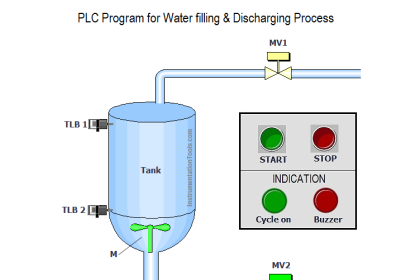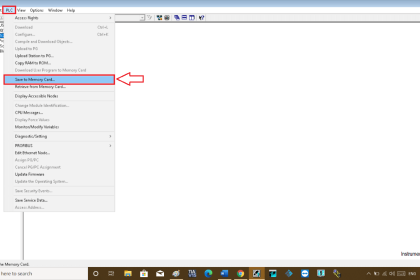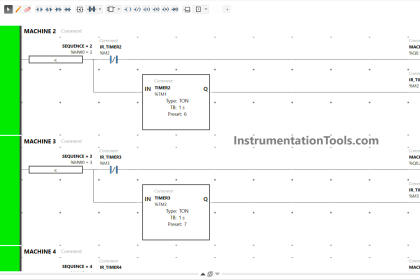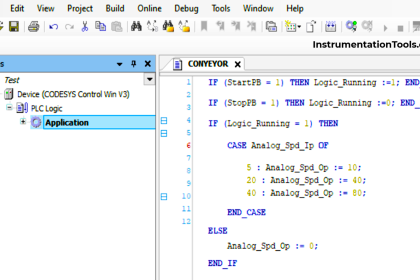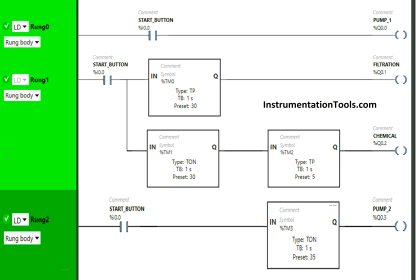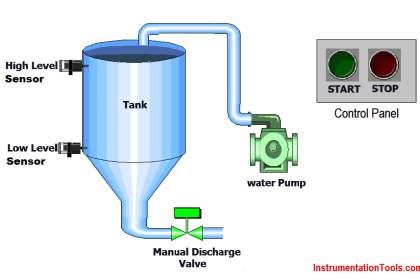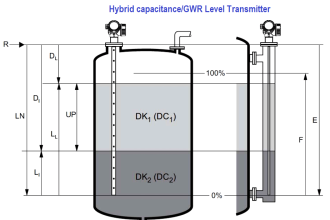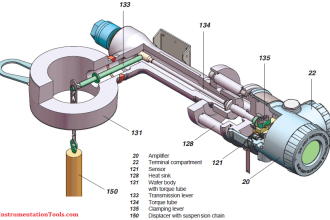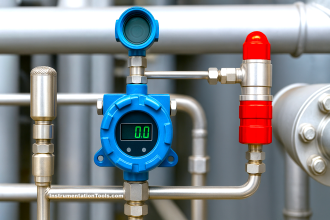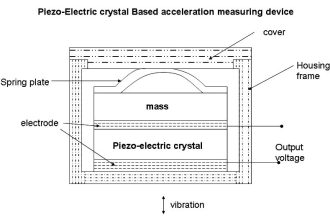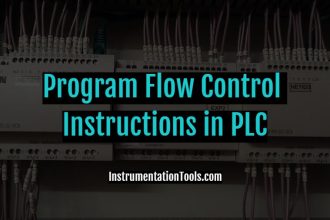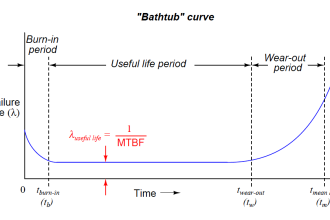When you are working in a PLC system, it is necessary to understand what faults occur in the PLC modules. If a PLC programmer does not understand what fault is coming in the PLC and how to solve it, then he will take a very long time to troubleshoot the system.
Every PLC and its modules have LEDs on them for visual easing and troubleshooting. Their detailed description is also given in their user manuals. So, it is important to understand how these LEDs function and once you get them, fault diagnosis becomes a very easy task for PLC programmers.
In this post, we will learn the concept of fault diagnosis in PLC.
PLC Fault Diagnosis
Let us have a look at some of the most general types of faults which can be identified with PLC LED’s:
Run LED is used to denote whether the module is functioning properly or not. If it is on continuously, then it means that the module is working properly. If this LED is off, then the module is faulty or off.
Err LED is used to denote whether the module is in error or not. If it is on continuously, then it is an internal module error. If it is flashing, then it means either the module is not configured properly or there is some issue in the PLC hardware connected to it. If it is off, then it means there is no fault in the module.
I/O LED is used to denote the exact status of the PLC IOs connected with the module. If it is on continuously, then it means there is some supply voltage error or short circuit. If it is off, then it means there is no error in the IO’s connected.
Channel LED is used to show the status of individual channels. If the LED is on continuously, then it means the channel is functioning properly. If it is flashing, then there is some error in it (broken wire or value out of range). If it is off, then it means the channel is not configured at all.
Some communication modules like Modbus RTU have a truth table of the LEDs, signifying each value of the same.
LED Indications in PLC
They are mostly as in the below table:
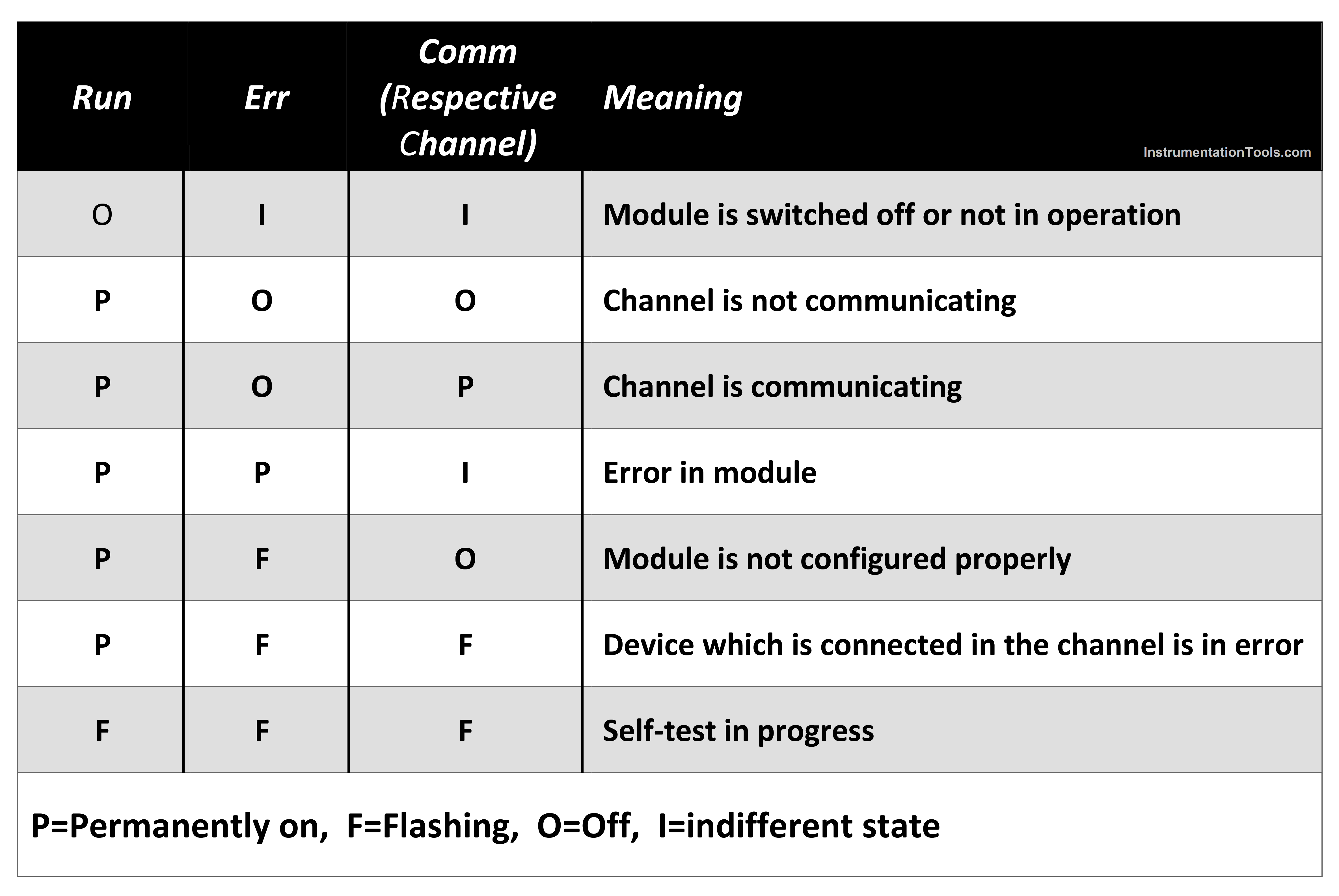
Note: The LED indications may vary based on the PLC model and brand. The above table is an example from one of the PLC models in the market.
Some communication modules like Modbus TCP/IP have slightly complicated LED diagnostics. But it is important to understand them for troubleshooting.
The module is running if the run LED is on and stopped if the LED is off. If Err LED is flashing, then it means the module is in error and if it is flashing, then it means either the module is not configured properly or there is some issue in the backplane if it is connected.
If the network status LED is off, then it means that the module is not communicating with any device; if it is on, then it is communicating with at least one device; if it flashing, then it means some duplicate IP address has been detected or some time out error.
In this way, we saw some general fault diagnoses in PLC.
If you liked this article, then please subscribe to our YouTube Channel for Instrumentation, Electrical, PLC, and SCADA video tutorials.
You can also follow us on Facebook and Twitter to receive daily updates.
Read Next:
- PID Controllers in Control Systems
- Update PLC Firmware Version
- PLC ON-OFF Control with Hysteresis
- Design Counters in PLC Program
- Basic PID Controller Output Types
